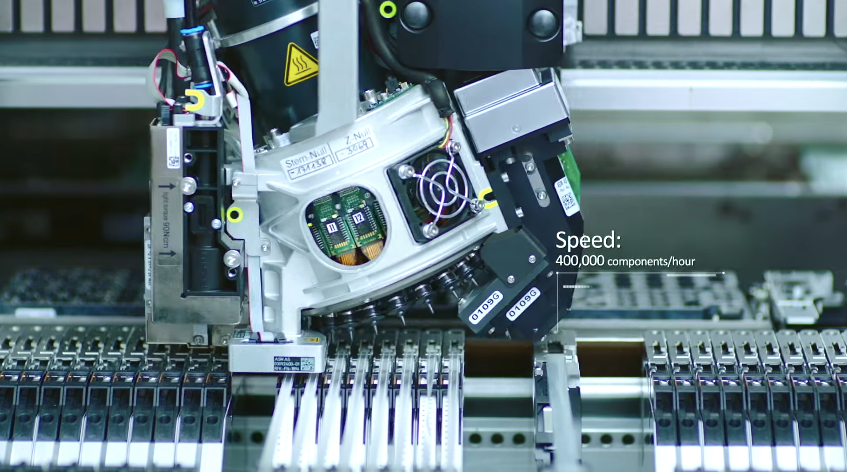Manufacturing for low cost, high volume: the trade-offs
- chloeagarnham
- May 2, 2021
- 4 min read
Updated: May 16, 2021
In 2017 HardworX led a group of engineers, entrepreneurs, and startup founders to tour Shenzhen. The aim: to demystify hardware manufacturing in China. Smart-home product manufacturer, ITEAD Studios, was of particular interest to a number of tour participants who had used its products previously.
The company produces a range of home automation products under the Sonoff brand. These products compete with the larger players in the home automation space, like Google.

ITEAD creates a complete, and complex home automation system that is run via a smartphone. This means that things like lighting, air conditioning, and appliances can all be controlled remotely.
Jonathon Oxer, Freetronics, was particularly interested to visit the company. He runs a Youtube series, Superhouse, where he documents automating his house with Sonoff products. He was keen to understand how these products were manufactured to gain a broader understanding of their functionality.

Make innovation easier
ITEAD is unique due to the company’s focus on its own product range, rather than exclusively creating products for others. This means they offer a slightly different perspective, and they’ve been able to focus on nurturing a collaborative culture.
ITEAD’s tagline is ‘make innovation easier'. That’s evidenced by their commitment to open source. The hardware they create allows users to edit, modify, and become creators themselves.
The hardware is designed in such a way as to support open access for people to ‘hack’ into the system, or modify, and play with the product range. Even though the Sonoff brand has taken off globally, ITEAD has kept to their ethos about open source hardware.
Low costs, large output
At open-source company SEEED, the group was exposed to a very modern, western-style factory, whereas ITEAD offered a more modest set-up––a small factory, without a refined showroom. That decision appears to be intentional.
ITEAD’s focus is the creation of low-cost products but done at scale. By using a mixture of automation and hand assembly, they are able to produce at high volumes at very low costs. In fact, the small factory is able to turn out hundreds of thousands of units per month.

At LIFX, tour participants were able to witness the production process end-to-end for the first time. ITEAD offered another opportunity to see the entire production process, for a different class of product, helping to solidify learnings across the tour and bring together the different elements witnessed at different factories.
In order to keep costs down, and output high, the company employs a number of techniques to keep the line efficient. For example, instead of screws, they use heat stake, a faster method, which is much less likely to fault. In fact, surprisingly there were no screwdrivers on the production line at all. Techniques like this are a tradeoff. Heat stake, while quick, is difficult to fix. If a test does fail, the components are likely wasted and the process will need to start from scratch.
ITEADs low cost-focus means not relying on fasteners and tools and, instead, produces plastics that snap together. While some aspects of production are automated, like the SMT line, there is a considerable amount of manual handling. The hand assembly, however, is rapid and accurate, with testing at multiple stages.

Whereas at a company like Hytera, where the exclusive focus is on the highest possible quality, ITEAD focuses on keeping costs low while still meeting a quality benchmark. The contrast between the two factories was fascinating for tour participants. Like other tour visits, it expanded their knowledge, not only of what can be done, but how each factory’s relevance and skills will be suitable for different companies, product ranges, and projects.
A key learning
In production, every decision ultimately comes down to a tradeoff between time, cost, and quality. These tradeoffs will define the final product. Knowing where to make the right tradeoffs is essential.
For many startups, high-level manufacture like Hytera would never be appropriate. For those producing low-cost products at scale, a company like ITEAD could be a good fit. Ultimately, the tour group discovered: in China, there are factories at different ends of the scale, with entirely different production mentalities. By exploring and researching, one can likely find the right fit, for the right product.
Watch the full tour of ITEAD below.
The factory tour of ITEAD was also documented by Jon Oxer for his Superhouse channel. Learn a little about the amazing city of Shenzhen, see its enormous electronics markets, and go inside the Sonoff factory to watch them progress from a bare PCB to a finished product.
HardworX would like to thank all those who made the tour possible, and in particular:
Karl von Möller for his passion and dedication in producing this documentary series. The entire documentary episode list can be viewed here.
All of the factories for welcoming the tour group, spending time, and sharing knowledge. To view a list of the factories visited, click here.
The HardworX Shenzhen Innovation 2017 tour group consisted of tour leader Vela Georgiev, participants Andy Gelme, Brian Gilbert, Jon Oxer, Kemal Ajay, Liam Brennan, Noor Magesh, Sarah Last, Tom Partridge, Simon Holmes a Court, Hans Chang, and Karl von Möller.




Comments